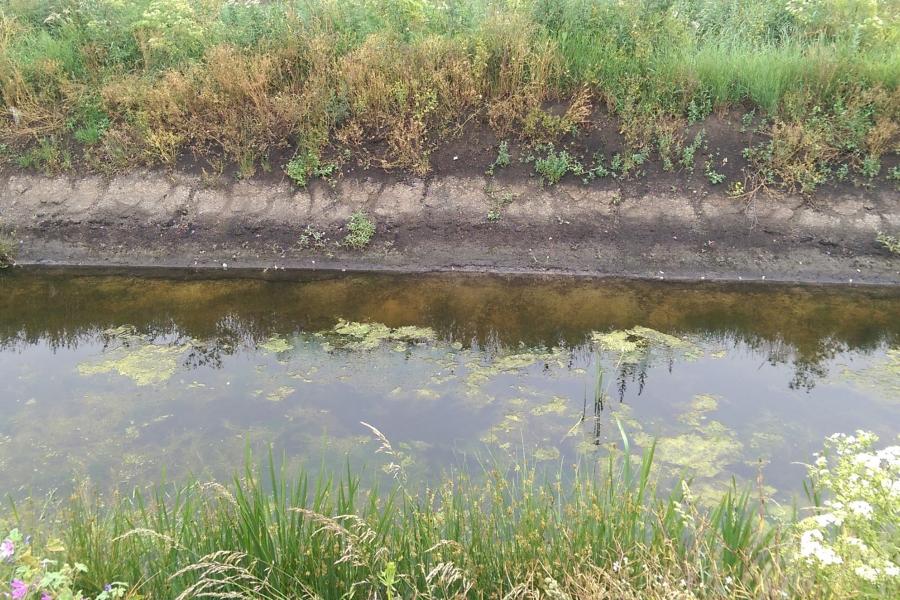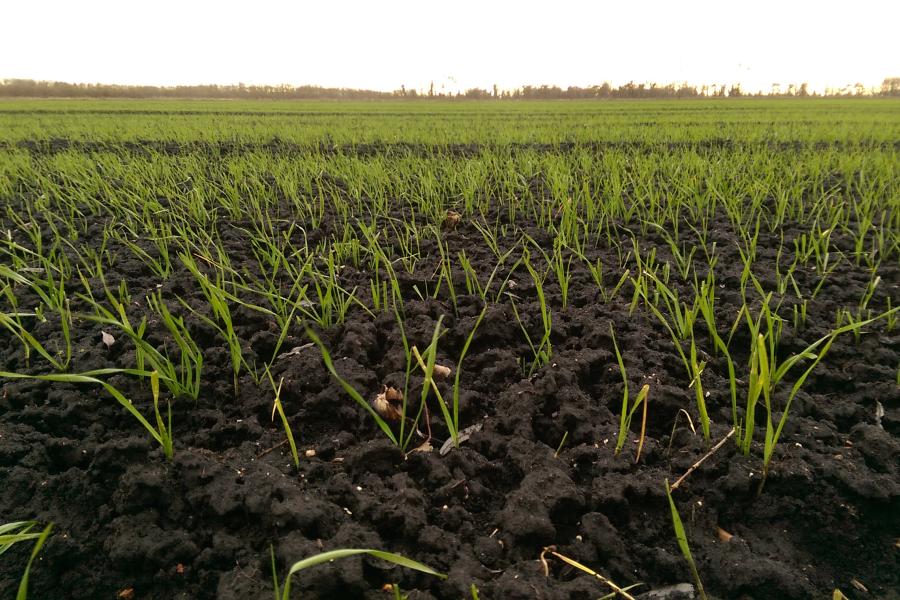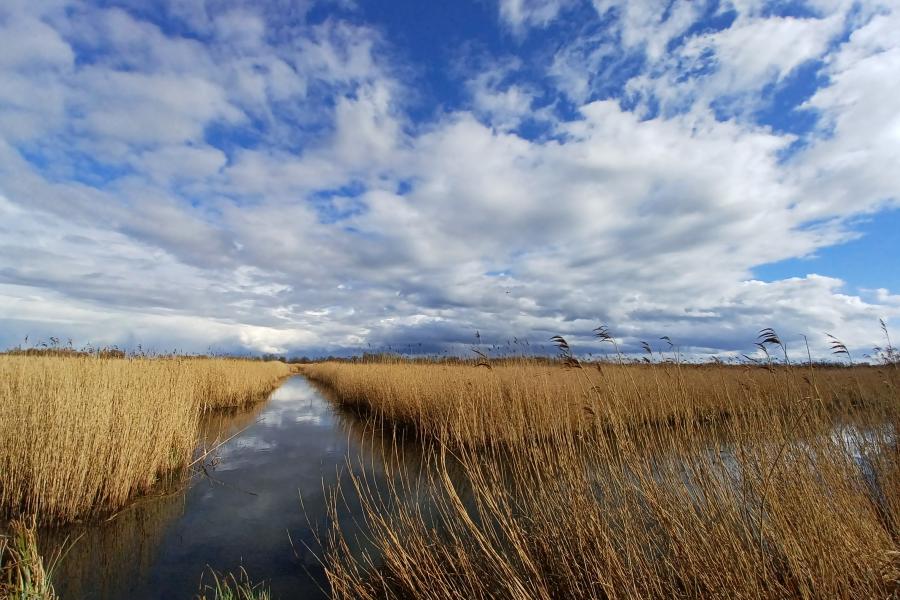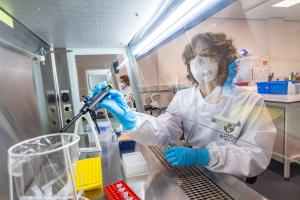We all need to eat. However, producing our food accounts for a quarter of global greenhouse gas (GHG) emissions. Reducing these emissions is vital to combatting climate change but we also need a resilient and profitable agricultural sector to ensure everyone has enough food.
A new paper published in Global Change Biology (https://doi.org/10.1111/gcb.16152) looks at how we can navigate these issues in the challenging context of farmed peatlands. It looks to open up a discussion on responsible peatland management strategies, whilst considering current economic and social realities.
In natural peatlands, plants take up carbon dioxide (CO2) from the air, and when their leaves fall, this carbon is safely stored under water. This means that over hundreds or thousands of years, these ecosystems have a natural cooling effect on the Earth’s climate.
However, in order to farm our peatlands, they have been drained. The resulting soil is highly productive, releasing lots of nitrogen, to help grass and crops grow. This allows farmers to produce high quality and high value food products, and supports many jobs in the rural economy. For example, the East Anglian Fens account for more than 7% of the UK’s food production, which is worth £1.23 billion to the economy.
At the same time, drainage lets oxygen into the peat. This oxygen allows soil microbes to rapidly break down the carbon stored in the peat and in doing so they produce substantial GHG emissions. An area of cropland the size of a football pitch on peat releases about as much CO2 per year as driving a car around the equator two and a half times. As a result, intensive farming of lowland peatlands accounts for around 20% of GHG emissions from the UK agriculture and land use sector. Carbon stored in these soils is extremely vulnerable and they may largely disappear in less than 100 years.
The way we farm peatlands today has its origins in the drive to maximise food production after World War II, when keeping people fed was a source of national concern following years of rationing. However, back then we were less aware of the risks from climate change. As a society, we need to take a more responsible, modern and balanced approach to how we use and manage our peatlands.
We need a dialogue between all the stakeholders, to find a balance where we can reduce greenhouse gas emissions. That will probably come at a cost to food production, which may be undesirable to some parties.
In the UK, for example, we are currently maximizing food production and accepting the greenhouse gas emissions as a cost. If our main aim is to address food security or self-sufficiency, this makes sense, but it does not address climate change or fit with our national ambitions for net zero.
The paper considers intermediate compromise systems that strike some balance between these competing priorities, in order to begin a conversation between all the stakeholders.
Peatlands are naturally wetland systems, so water is the key to managing them responsibly. The depth to the groundwater controls how much peat is safely under water – where there is less oxygen to help microbes break down the soil carbon – and as a result also strongly controls GHG emissions.
The authors call for the development of wetland agriculture strategies. These would aim to reduce GHG emissions by bringing more water back into our peatland landscapes, and allow productive use to continue by adapting farming methods to the wetter conditions.
Wetland agriculture could include a range of approaches depending on the specific situation. For example, paludiculture involves bringing the groundwater back to near the peat surface and growing wetland adapted crops but this will not always be immediately viable in the current economic landscape.
Therefore, we also need other strategies that require smaller adjustments to current systems. Currently, farmed peatlands are often deeply drained all year but we need to think about how we can drain less deeply, or if we can stop draining the soil during the winter months, to let more of the peat be wetter for longer.
Professor Sue Page, of the University of Leicester and an author on the paper comments:
“Adoption of wetland agriculture strategies will involve changes to farm practices, business models and water management infrastructure. There is a real need for practical research and innovation to support farmers.
We have to work alongside farmers to identify which are the best, most workable strategies to implement. Of course, we also need to learn what the risks might be and how we can manage these because peoples’ livelihoods and national food security are involved and we mustn’t take those lightly.”
There are no easy answers and there are difficult decisions to be made. However, we cannot bury our heads in the sand because if we do not act then high GHG emissions will continue and our lowland peat soils will soon be gone. At the same time, farmers need support to change the way these systems are managed. That requires society to start paying attention to this issue and come together to find consensus on what we value and how we want to protect it.
Lowland peatlands




Anything that reduces agricultural efficiency is challenging for farmers, who operate within fine profit margins. There needs to be a change in the economic environment, so that farmers can adopt, and be appropriately rewarded for, responsible peatland management strategies without risking their livelihood.
This could come from a change in policy or from expansion of private finance schemes like the UK’s Peatland Code. However we get there, we need to change the economic dynamics around agriculture on peatlands and recognise the value of protecting and enhancing these important carbon stores.
The paper concludes by asking us to consider an alternative vision, full of opportunities for the future of our lowland peatlands. The authors suggest that wetland agriculture could be combined with restoration of natural wetland habitats, construction of water treatment wetlands and green energy infrastructure (like solar panels and wind turbines) to create thriving, innovative and green wetland landscapes. These could produce high-value, specialist food products and other crops, along with green energy, freshwater supplies and wild spaces for nature and people to enjoy, whilst avoiding a large amount of GHG emissions.
This research was supported by the UK Natural Environment Research Council, UK Biotechnology and Biological Sciences Research Council, Department for Environment, Food and Rural Affairs, G’s Growers Ltd. and the STARS (Soils Training and Research Studentships) Centre for Doctoral Training.




